Well-Being & Ecology _|_ Issue 12, 2019
Rewilding: A Hope for the Future?
In the light of the recent UN report on the radical decline of biodiversity, Richard Twinch investigates a movement which promises to restore ecological harmony
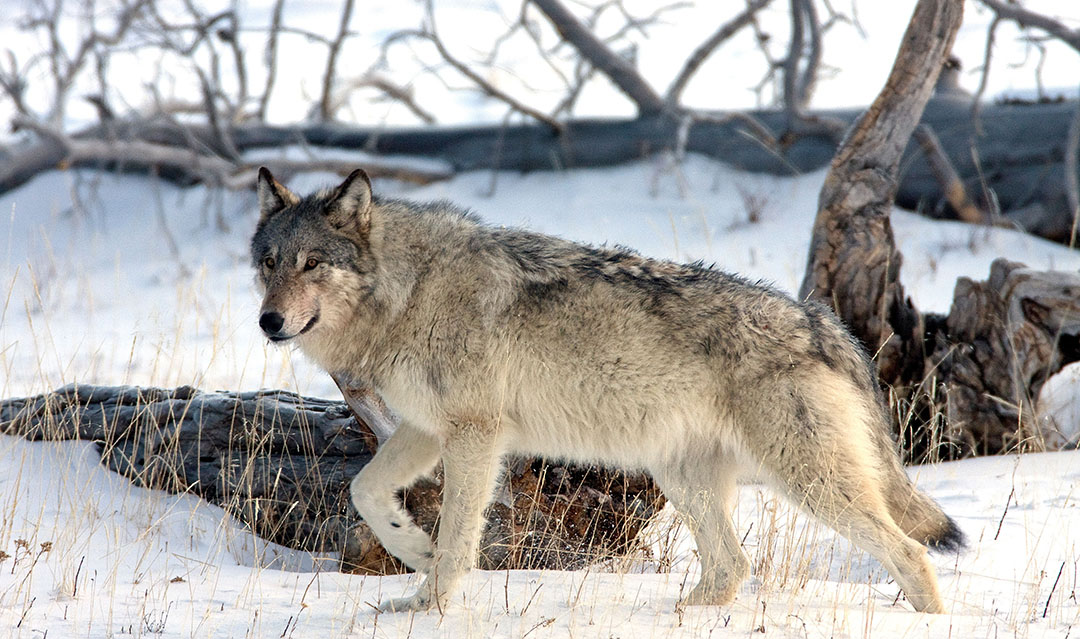

Rewilding: A Hope for the Future?
In the light of the recent UN report on the radical decline of biodiversity, Richard Twinch investigates a movement which promises to restore ecological harmony
The United Nations report on biodiversity, published in May 2019, has raised alarm bells around the world as it reveals that thousands of species are in dramatic decline due to the effects of human activity. Rewilding is an attempt to reverse this trend by re-introducing key species back into selected areas and letting nature take its course. Richard Twinch investigates the principles behind the movement, and reports on the rapid changes which have resulted in places like Yellowstone National Park (USA), Oostvaardersplassen (The Netherlands) and the Knepp Castle Estate (UK).
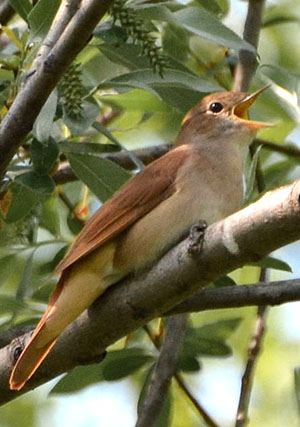 “One million animal and plant species are threatened with extinction, many within decades, more than ever before in human history.” [1]
“One million animal and plant species are threatened with extinction, many within decades, more than ever before in human history.” [1]
These are the headlines that rocked the world a couple of weeks ago from the conclusion of the UN report from Intergovernmental Science-Policy Platform on Biodiversity and Ecosystem Services (IPBES) [/], that was released on the 6th May 2019. According to Professor Josef Settele:
“Ecosystems, species, wild populations, local varieties and breeds of domesticated plants and animals are shrinking, deteriorating or vanishing. The essential, interconnected web of life on Earth is getting smaller and increasingly frayed. This loss is a direct result of human activity and constitutes a direct threat to human well-being in all regions of the world.” [1]
Homo sapiens has been depleting the environment ever since we emerged from Africa 70,000 years ago. In Africa, plants and other animals had a chance to evolve alongside this novel emergence of nature. They learnt to be wary and adapt to homo sapiens’ huge powers of technical skill and social abilities, which could develop ways to drive whole herds of mammoths off cliffs and use fire to dominate the landscape. However, once the critical bridgehead out of Africa had been formed, the days of the large mammals – the megafauna – were numbered. The process of species reduction which started in pre-history as a trickle has now become a flood, resulting in our own times in the wholesale destruction of natural systems from the largest to the smallest. The graph of this devastating decline (below) tells the story.


Information from the 2019 IPBES Report into species decline
This is shocking and the numbers are staggering – and almost overwhelming. What can be done? What can we do if we are not to fall into despair – a perfectly understandable state in the face of powerful and intractable interests? IPBES propose that ‘transformative change’ is the solution. According to its chairman, Sir Robert Watson:
The Report also tells us that it is not too late to make a difference, but only if we start now at every level from local to global. Through ‘transformative change’ nature can still be conserved, restored and used sustainably – this is also key to meeting most other global goals. By transformative change, we mean a fundamental, system-wide reorganization across technological, economic and social factors, including paradigms, goals and values. [1]

Biologist Rachel Carson
Silent Spring
.
Alongside this dramatic damage to the environment in modern times, there has been a growing awareness of the impact of human activity. An important development happened in the 1960s and 1970s, when Rachel Carson took on the scientific establishment in her seminal book Silent Spring [2] and reversed the use of poisonous chemicals (DDT and much worse) with which the western world, and America in particular, was dosing itself indiscriminately. In so doing, she single-handedly launched the ecological movement.
Listening to this afresh on an audiobook, I am struck by the beauty of the writing and the lucidity of thought that carried her message. Carson had to walk a very tight line in order for her ideas to be taken seriously; this was just after the McCarthy age in the USA, and challenging the status quo head on was always going to be counterproductive, particularly for a woman without a powerful position. She succeeded as she was able to paint a picture in words of the beauty, benevolence and exquisite structure of the natural world, albeit one already much modified by human activity. This was contrasted by the equally lucid and detailed descriptions of the terrible consequences of the blind and wilful application of chemicals – many of which had been developed as weaponry in World War II.
However, the other thing that struck me as I listened to the litany of Silent Spring is how little has changed in the intervening 57 years. Carson bought us some time and these particular chemicals were outlawed. But this did not change fundamental mind-sets, so much so that we are now looking down the same gun barrel. Modern chemicals such as neonicotinoids and glyphosates are more sophisticated and do not directly target higher mammals as did those of the 1940s and 50s, but their effect is substantially the same. Insects and plants are vanishing before our eyes, or “even before we know they exist” as David Attenborough put it in his recent address [/] to the 2018 United Nations climate change summit in Poland. The birds that rely on insects for food are diminishing fast. Much of this is due to habitat loss, but a significant proportion is due to the use of chemicals, which are used as blindly in the 21st century as they were in the 1940s and 50s – although the recent ban on some neonicotinoids [/] by the European Union is a hopeful sign that environmental campaigns are beginning to have some effect.
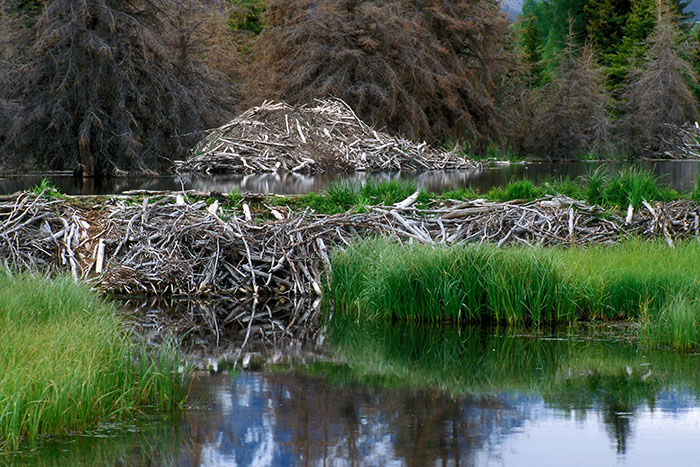
North American Beaver Dam and Lodge in Yellowstone National Park, USA. Photograph: Clemente Philippe/Alamy Stock Photo
Rewilding: The Yellowstone Experiment
.
An area where there has been some dramatic progress over the last 30 years has been in ‘rewilding’. The word was coined by conservationist and activist Dave Foreman [/], one of the founders of the group Earth First! [/] who went on to help establish both the Wildlands Project (now the Wildlands Network) [/] and the Rewilding Institute [/].
The best-known demonstration of rewilding has been in Yellowstone National Park in the USA where, in 1995, wolves were reintroduced 70 years after they had been exterminated. Very quickly the whole ecology of the park changed as the apex-predator rearranged the landscape – causing even rivers to change their courses.
Video: How Wolves Change Rivers. 4:33 minutes
In his seminal book Feral [3] George Monbiot describes what happened (see also video right or below). Before the wolves arrived, much of the land alongside rivers and streams had been closely cropped by the high population of elk and were almost bare. But this started to change almost as soon as the wolves came. This was partly because they directly reduced the elk numbers but also, more significantly, they modified the behaviour of their prey, who started to avoid areas like valleys and gorges where they could be caught most easily. Monbiot describes just how dramatic effect all this had:
In some places, trees on the riverbanks, until then constantly suppressed by browsing, quintupled in height in just six years. The trees shaded and cooled the water and provided cover for fish and other animals, changing the wildlife community which lived there. More seedlings and saplings survived. The bare valleys began reverting to aspen, willow and cottonwood forest. One apparent result is that the number of songbirds increased: among the resurgent trees a study has found higher populations of species such as the song sparrow, warbling vireo, yellow warbler and willow flycatcher (Feral, p.84).
The regrowth of forests along the river banks also encouraged the numbers of both beavers and bison to expand; between 1996 and 2009, beaver colonies increased from one to twelve. The presence of the beaver dams in turn created niches for other animals such as otters, muskrats, fish, frogs and reptiles. Tree regrowth also stabilized the banks of the streams; the rate of erosion decreased and a changing pattern of water flow created greater diversity of pools and riffles. The soil on the hillsides, which had been depleted through sheet erosion, may now begin to build up again. And so on.
The Yellowstone experiment demonstrates how the reintroduction of a single pivotal species can transform almost every aspect of an ecosystem. These effects are referred to by ecologists as ‘trophic cascades’. As Monbiot explains:
Trophic means relating to food and feeding. Restoring trophic diversity means enhancing the number of opportunities for animals, plants and other creatures to feed on each other; to rebuild the broken strands in the web of life. It means expanding the web both vertically and horizontally, increasing the number of trophic levels (top predators, middle predators, plant eaters, plants, carrion and detritus feeders) and creating opportunities for the number and complexity of relationships at every level to rise. A trophic cascade occurs when the animals at the top of the food chain – the top predators – change the numbers not just of their prey, but also of species with which they have no direct connection. Their impacts cascade down the food chain, in some cases radically changing the ecosystem, the landscape and even the chemical composition of the soil and the atmosphere (Feral, pp.83–4).

Konik horses in the Oostvaardersplassen, Netherlands. Photograph: GerardM via Wiki Media Commons
Rewilding in Europe
.
These ideas have inspired a host of new projects. For instance, there is now a strong movement in Europe [/], which has at least retained wilderness at its geographical edges; wolves, bears and lynx have never quite been eliminated from places like Russia and Hungary. But wolves have all but vanished in central Europe and particularly in the UK, where there had not been a big presence for centuries before the last was exterminated over 300 years ago. But now, there are discussions about reintroducing wolves in Scotland [/]. This is highly controversial, as wolves and humans in proximity compete for the same resources – especially sheep – and legend and fear dominate the discussion.
Beavers are less controversial, but nonetheless are perceived as intruders, despite having been natives in the UK. They were hunted to extinction in the 18th century for fur, perfume and castoreum (a very important medicine used in medieval times, but also used today as a food additive). Beavers are still plentiful in the USA, but European populations were down to 1,200 individuals by 1900. They have since been reintroduced in 161 locations in 24 European countries, including Germany, where they live happily alongside fishermen – beavers are, after all, vegetarian, which most people are not aware of! There are now over 1.2 million beavers in Europe. The good news is that as this article is being written, beavers in Scotland [/] have just become a protected species. Beavers are amazing natural ecological engineers and have a proven role to play in protecting us from flash flooding – by slowing the water in the high ground and preventing deluges in the valleys below.
In The Netherlands, a flagship project has been undertaken by Frans Vera, the Dutch ecologist, whose pioneering work on 6000 hectares of reclaimed land at Oostvaardersplassen [/], only half an hour’s drive from Amsterdam, has created a whole new landscape. This project, initiated in 1980, began changing the way in which natural processes are understood, breaking the textbook ‘vegetation succession’ theory whereby it was believed that open space ultimately results in closed-canopy forest. It started with a flock of 10,0000 greylag geese, which kept the fresh water areas open by grazing reeds and vegetation, creating a much more complex habitat which benefitted biodiversity. Large herbivores, ancient breeds of cattle and horses, were then introduced in order to keep areas of grassland open when the geese were moulting. During this time the geese, on their own, could not have held back the succession of willows springing back to life because their activity is much reduced as they shed old feathers and grow new ones. Within a few years, an environment has been created at Oostvaardersplassen that is otherwise only visible in places such as the Serengeti in Africa.

Aerial view of the 3500-acre Knepp Estate, Horsham, West Sussex. Photograph: Charlie Burrell
The UK: The Knepp Experiment
.
Another exciting project, which was explicitly inspired by Vera’s vision, is Knepp in West Sussex, UK [/], where in 2000, the aptly named Isabella Tree and her husband Charlie Burrell took 3500 acres of their ancestral land out of cultivation and embarked on a process of rewilding, or rather ‘wilding’ as Tree prefers it. She explained to us that:
‘Re’ encourages people to believe that we are attempting to return to the ecosystems of the past – something that is completely impossible. So it’s more a misunderstanding on behalf of public and scientists alike. Rewilding is not an ideological yearning for the past. It’s about allowing nature to create novel ecosystems with the tools it has left.
The initial ecological impulse, advised by forester, Ted Green, who had been the custodian of the oaks in Great Windsor Park, was to save the ancient oaks that they had noticed were suffering badly. This coincided with a realisation that however hard Tree and Burrell worked, modernised and invested in farming, they were losing money at prodigious rates and a complete rethink was required. Opposition from local farmers and landowners was enormous as unbridled nature strained at their boundaries. But within 18 years, the landscape at Knepp has been transformed to become a haven for wildlife of all kinds.
However, the story, as told by Isabella in her book Wilding [4], is not without many twists and turns and reads more like a novel than a text book on ecology. For example: once the land was taken out of cultivation and the machinery sold off, thorny scrub quickly spread. Tree and Burrell let natural systems run their course – as Tree comments:
We had no goals or aims, and this is a key principle of rewilding. Trees (oak, crab apple, wild service, birch) simply emerged through natural regeneration (birds, wind, small mammals), protected from the browsing of large herbivores by thorny scrub.
Jays turned out to be the best labourers of all, taking acorns from beneath the ancient oaks and hammering them in under hawthorns. This protected them from the large herbivores which had been introduced – Old English longhorn cattle, Exmoor ponies and Tamworth pigs as well as native fallow deer and, later, red deer. The symbiotic ‘pay back’ for the jay is not only to recover the acorns later on, but also to harvest the early cotyledons (underground embryonic leaves) which the oak produces. These cotyledons are high in energy, which the jays feed to their offspring. Amazing! I look on the jays in my garden with renewed respect.

Marsh Thistle with a spiders web at Knepp Estate. This is an important plant in the trophic cascade, providing micro-habitats that in turn produce food for birds and mammals. Photograph: David Woodfall [/] / Alamy Stock Photo
Another favourite example of the benevolence and deep mystery of nature occured during the years 2008 and 2009 when creeping thistles ran rampant and the urge to kill them with chemicals was bravely resisted. What happened next was a miracle of ecology. A huge migration of 11 million Painted Lady butterflies swept up from North Africa, and enormous numbers descended on Knepp and laid their eggs on the thistles. The caterpillars in their tens of thousands ate the thistles before taking off on their extraordinary multi-generational migration to return from where they had come. Nourishment had been provided and the rash of thistles vanished.
The estate has also provided the attractor for a wide variety of species of butterflies, moths and birds, many of them incredibly rare. In particular, by 2016 it became one of the places in the country with the greatest densities of nightingales (now one of the rarest species in the UK), drawn by thick undergrowth where the male birds compete to ‘call in’ over-flying females. It is the density of the new scrub that is attractive, where nests can escape predation and fledglings can forage under protection.
Knepp is certainly a great success story – but not one that stands still. Tree and Burrell are concerned that the process does not become fixed at one stage of development, which would happen for instance if an SSSI (Site of Special Scientific Interest) was granted (or rather imposed). As Tree puts it:
Nature is not a static system – it is dynamic and restless, involving cycles of boom and bust, favouring different species at different times. Locking a habitat down in stasis (as nature reserves are often forced to do in order to save certain species from extinction) is not only hugely labour intensive and expensive, but ultimately restricts natural processes and inhibits species resilience.
What they want to see, by contrast, are ‘pop-up Knepps’ that appear for a while and allow nature and the land, in particular the soil, to replenish and recover its vitality and fecundity. Tree adds:
This is just one idea of how rewilding might work in tandem with agriculture. What Knepp shows, more importantly, is how we can put into practice Sir John Lawton’s call (in the government review Making Space for Nature [/]) for “more, bigger, better and joined up” nature in our landscape. Not only does rewilding benefit biodiversity, but it also provides vital ‘ecosystem services’ for the public good – like carbon sequestration, flood mitigation, water storage, water purification, air purification, and – hugely important – soil restoration. While at the same time providing wild places for human health and well-being. And the amazing thing is that this all happens so quickly. Nature can bounce back, as long as we have the will to let it.

European bison, who have been successfully reintroduced into the Dutch dune area, the Kraansvlak, in the Netherlands. Photograph: Ruud Maaskant/Courtesy of Wisentproject. See here for more information.
The Romance of the Wild
.
The examples of Knepp and Oostvaardersplassen show how nature, if allowed to perform in the presence of large herbivores, can result in much more complex and dynamic landscapes than what we assume is ‘natural’. As Tree quotes from Frans Vera:
We forget, in a world completely transformed by man, that what we’re looking at is not necessarily the environment wildlife prefers, but the depleted remnant that wildlife is having to cope with: what it has is not necessarily what it wants. Species may be surviving at the very limits of their range, clinging on in conditions that don’t really suit them. Open up the box, allow natural processes to develop, give species a wider scope to express themselves, and you get a very different picture… Minimal intervention. Letting nature reveal herself. And the result is an environment we know nothing about (Wilding, p.58).
As well as the ‘pragmatic’ approach to rewilding, there is also a romantic ‘call of nature’ expressed in such books as Call of the Wild and White Fang [5] by Jack London in an earlier age. This is expressed strongly in our time by such writers as George Monbiot, who is admired and disliked in equal measure – the latter largely because he questions the overwhelming presence of sheep in the highlands of Wales and Scotland which he likens to a “white plague”. His argument is that sheep are not native animals, having been introduced originally from Mesopotamia, so our flora in the UK do not have natural defences against them. Sheep are also overstocked and the land overgrazed. Many of us see the landscape they create as beautiful through the lens of our recent culture. But this is all part of the ‘baseline shift’ that ecologists talk about; we can only look back to what we remember. If frogs and frogspawn do not form part of our memory, we simply do not miss them when they are gone.
Monbiot hearkens back to a time when the North Sea between the UK and The Netherlands had crystal clear water filtered by an oyster bed the size of Wales, and when shoals of herring, miles long and wide, swam through this crystal sea. This was only 250 years ago. But then he looks back further to the Pleistocene (often colloquially referred to as the Ice Age) when megafauna dominated the landscape before succumbing to homo sapiens, a theme taken up later by Yuval Noah Harari.[6] Monbiot’s ‘re-wilding reintroduction list’ ranges from the blue stag beetle (scoring 10 for suitability) to the lion, the rhinoceros and the elephant (scoring 1), all of which historically lived in Europe and evolved alongside the plants and trees we know today – though the European straight-tusked elephant is sadly already gone. However, a note on Monbiot’s list under ‘lion’ acknowledges that “the clamour for the lion’s reintroduction to Britain has, so far, been muted”!
The final chapters of Feral are taken up with personal reminiscences. These include fantastically dangerous encounters with raw nature whilst fishing from a kayak in the sea off the Welsh coast. It is this elemental encounter with nature that Monbiot feels is essential to the human spirit, saying:
Wherever I went, I would take the wild life with me. I would devote much of my life to seeking out or helping to create places where I could hear again that high exhilarating note to which I had for so long been deaf, where I could find that rare and precious substance, hope (Feral, p.268).
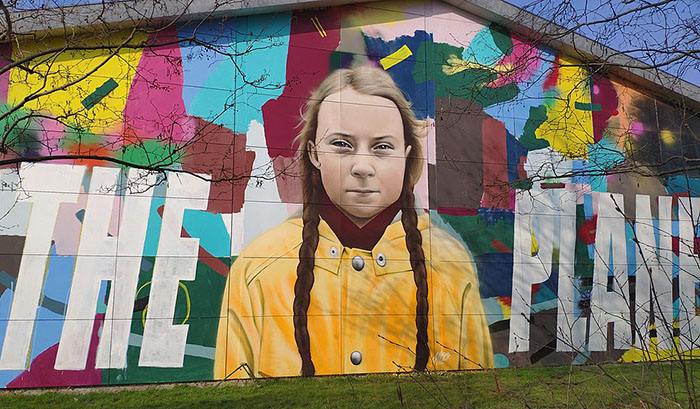
A mural featuring the image of Greta Thunberg, by Danish street artist Miki Pau Otkjær. The artwork title is ‘Save the planet now’. The mural is located in Hillerød, Denmark, and was finished in March 2019. Photograph: Neogeografen via Wiki Media Commons
Hope for the Future
.G
Going back to what Rachel Carson was saying in the 1960s, I was shocked to realise that I had been growing up in the era where the terrible use of DDT was destroying the UK environment, but I was not aware of it. I was lucky to have been immersed in a rural landscape with wildflowers, natural ponds filled with newts and frogs, and spring flowers growing in the pastures. Hay was cut by machine and gathered by hand, as were potatoes, and wild rose hips, for use in Vitamin C supplements, could be collected for one penny a pound to be weighed and paid at school – a lesson both in economy, health and the hidden benefits of wilderness. Birds nested everywhere and their eggs were collected without affecting numbers.
A child growing up now cannot escape as blithely as I did; ecology is taught in schools, and it is ubiquitous on the television and social media. We are living in what appears to be a frightening world where the global temperature is rocketing and the natural world, which has sustained humanity, is shrinking fast. As Greta Thunberg said in December 2018:
Why should I be studying for a future that soon may be no more, when no one is doing anything to save that future? And what is the point of learning facts when the most important facts clearly mean nothing to our society? [7]
Her words initiated the school strikes that have gone global this year. In the UK, we have also had an Easter uprising of Extinction Rebellion urging the politicians and ordinary people to take notice of the urgency of the situation we are in. As Thunberg said at Davos in January 2019: “I want you to act as you would in a crisis. I want you to act as if our house is on fire. Because it is.” [8]
The UN/IPBES report recognises that there are very real obstacles to change:
The member States of IPBES Plenary have now acknowledged that, by its very nature, transformative change can expect opposition from those with interests vested in the status quo, but also that such opposition can be overcome for the broader public good. [1]
And it is certainly true that allowing nature to take over and manage things for itself, with little or no human intervention, meets with great opposition. The closer it is to dense human populations, the harder it is; even in my own little patch, a seemingly innocent action of removing mown rye grass and planting wildflowers on the verge of the lane brings claims from a neighbour that such activity is liable to cause walls to subside. Knepp’s legal battles with its neighbours in neat West Sussex are a saga. Where wolves have made their way back into the South of France, angry protests come from farmers fearful of an “old enemy”. [10]
There is no doubt that some of the fears that people have about rewilding will be proved true; mistakes will be made along the way, as they were recently in Oostvaardersplassen when famine stalked the reclaimed land [/]. But that is no reason to accept a natural world that is visibly, and invisibly, in decline. Is this not the kind of risk that is necessary if Watson’s appeal for ‘transformative change’ is to be taken seriously?
So perhaps it is hope itself that inspired Rachel Carson to write the Silent Spring; Frans Vera in The Netherlands, and Tree and Burrell in West Sussex to stand back and allow nature to craft new habitats; Monbiot to hurl himself into storms in a small kayak, and Greta Thunberg to walk out of her classroom and talk to the politicians of the world. The world needs to listen, and we need to continue to hope not just in abstraction, but in action as well.

“Rewilding (George Monbiot visits Merton College)”:
linocut created by Oxford-based artist Susan Wheeler [/] after reading Feral
Click here for the story
Story behind “Rewilding (George Monbiot visits Merton College)”
.
Two things that happened at a similar time.
Our son lent me a copy of George Monbiot’s ‘Feral’, which is a brilliantly argued book about how we could rewild our countryside in order to bring back a more biodiverse landscape. Then looking at some photos taken by neighbour and amazingly knowledgeable, multi-lingual tour guide Victoria Bentata (www.oxfordcitywalks.co.uk) of a beautiful carved doorway above a door in Merton College, Oxford. Here was an image of man in woodlands full of birds and beasts. I imagined a contemporary version of this scene (minus St John the Baptist and the Bishop of Rochester) with us humans having a more helpful and harmonious part in the natural world.
This print is a combination of these two ideas reworked as a linocut.
Our thanks to Isabella Tree for her input into this article.
Image Sources (click to close)
Banner picture: Grey wolf in Yellowstone National Park, USA. Photograph: Accent Alaska.com/ Alamy Stock Photo.
First insert picture: Common Nightingale, one of the species whose numbers increase as the area of scrubland increases. Photograph: Noel Reynolds via Wiki Media Commons.
Other Sources (click to open)
[1] IPBES Report, May 6th 2019. See https://www.ipbes.net/
[2] CARSON, RACHEL: Silent Spring, Penguin Modern Classics, 1962; edition 2000.
[3] MONBIOT, GEORGE: Feral: Searching for Enchantment on the Frontiers of Rewilding, Penguin Books 2014.
[4] TREE, ISABELLA: Wilding: The return of nature to a British farm, Pan Macmillan 2018.
[5] LONDON, JACK: The Call of the Wild: White Fang, and Other Stories, Oxford: University Press, 2009.
[6] HARARI, YUVAL NOAH: Sapiens: A Brief History of Humankind, Vintage 2015.
[7] “School Strike for Climate: Meet 15-Year-Old Activist Greta Thunberg, Who Inspired a Global Movement” in Democracy Now, 11th December 2018. See https://www.democracynow.org/2018/12/11/meet_the_15_year_old_swedish
[8] https://en.wikiquote.org/wiki/Greta_Thunberg
[9] “Why Wolves are Back in France” in The Economist, September 11th 2018. See https://www.economist.com/the-economist-explains/2017/09/11/why-wolves-are-back-in-france
Video Wolves in Yellowstone Park. See https://www.youtube.com/watch?v=ysa5OBhXz-Q
There is also a one hour film.
Email this page to a friend
FOLLOW AND LIKE US
——————————————
——————————————
——————————————
Video: How Wolves Change Rivers. 4:33 minutes
FOLLOW AND LIKE US
If you enjoyed reading this article
Please leave a comment below.
Please also consider making a donation to support the work of Beshara Magazine. The magazine relies entirely on voluntary support. Donations received through this website go towards editorial expenses, eg. image rights, travel expenses, and website maintenance and development costs.
READ MORE IN BESHARA MAGAZINE
A Biology of Wonder
An interview with scientist Andreas Weber, whose radical ideas are transforming our understanding of nature
The Unity of Bee-ing
An interview with Heidi Herrmann about the work of The Natural Beekeeping Trust in preserving our precious population of bees
The Revival of the Commons
Political strategist David Bollier explains how a new economic/cultural paradigm is challenging the increasing ‘enclosure’ of wealth and human creativity
Poacher’s Pilgrimage
A journey with Alastair McIntosh – poet, theologian, environmental activist, prophet of a new Scotland and a new world, and interfaith traveller
READERS’ COMMENTS

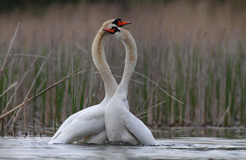

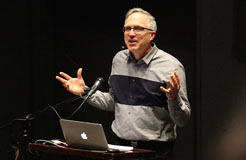

It’s like having one’s head in the sand and then having it pulled
up. This such a beautiful matter to get a (real) glimpse of. Thank
you so much Richard.